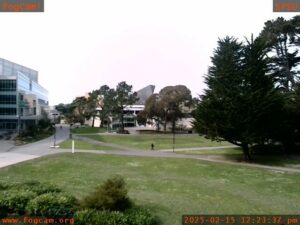Finding Your Way With Telepresence
Types of Telepresence
By Mark Ciotola
First published on September 22, 2024. Last updated on September 2, 2025.
Telepresence comes in several broad categories. Types of telepresence include passive telepresence and active telepresence. The several types of telepresence constitute more of a spectrum than a few isolated types. We will use these classifications. In addition, Draper et al. describe the types of telepresence as being simple telepresence, cybernetic telepresence, and experiential telepresence (Draper et al., 1998).
Passive Telepresence
Passive telepresence allows one to sense a remote location but not take any in situ actions or influence or manipulate the remote location. Aforementioned telescopes are an example of passive telepresence. A person can observe the remote location and even sense some of its illumination, but cannot actively affect the remote location.

Fogcam example view updated every 20 seconds. (Credit: San Francisco State University)
Another example of passive telepresence is webcams. Fogcam at SFSU is the oldest functioning webcam. Webcams allow you to feel like you are somewhere else, but they are passive in the sense that you can’t do anything except look around, although some webcams will allow you to to move the camera around.
UW Continuum College Cam
Intermediate Telepresence
An intermediate form of telepresense involve mobile sensors. Cameras mounted on rovers, such as the Aubot Teleport telepresence “robot” provides more active telepresence by allowing a viewer to move around. A lunar or Martian rover whose only purpose is observation fits in the category. Such telepresence can alter the remote location. For example, rovers leave tread makrs and trails in thedust and soil of the Moon and Mars.
Active Telepresence
Likewise there are increasing levels of influence upon a remote environment, until one achieves a more robust active telepresence. Some planetary science rovers on Mars have scoops and drills to manipulate their environment for improved sensing capabilities. Remote control surgery (such as by Computer Motion and Intuitive Surgery machines) is an invasive form of active telepresence to manipulate remote environments to achieve an effect, such as surgery to remove cancer.